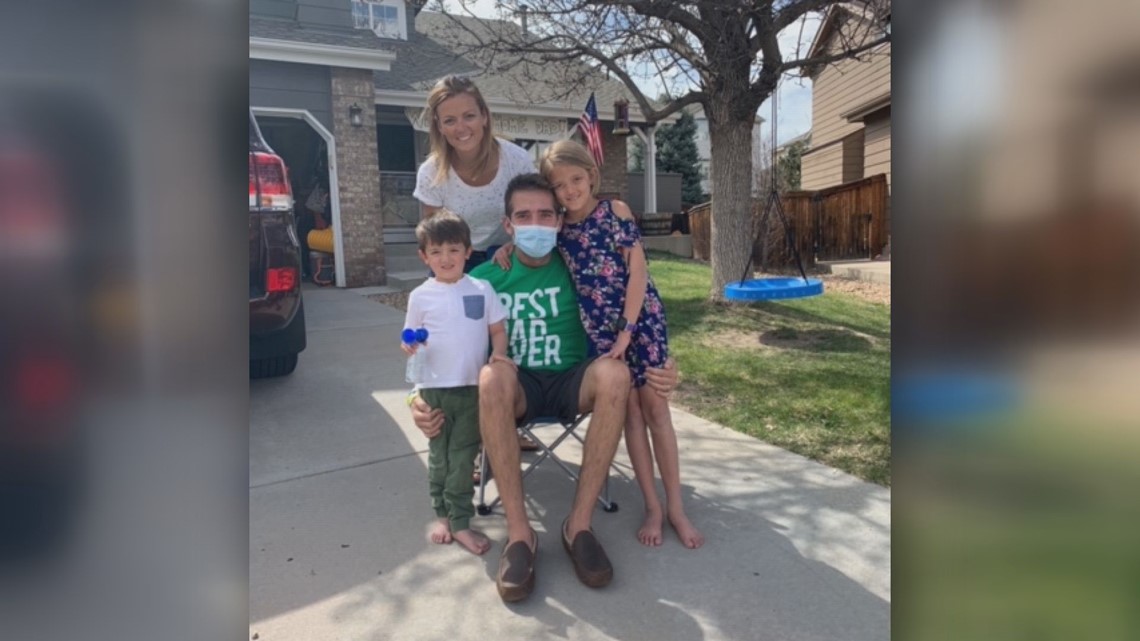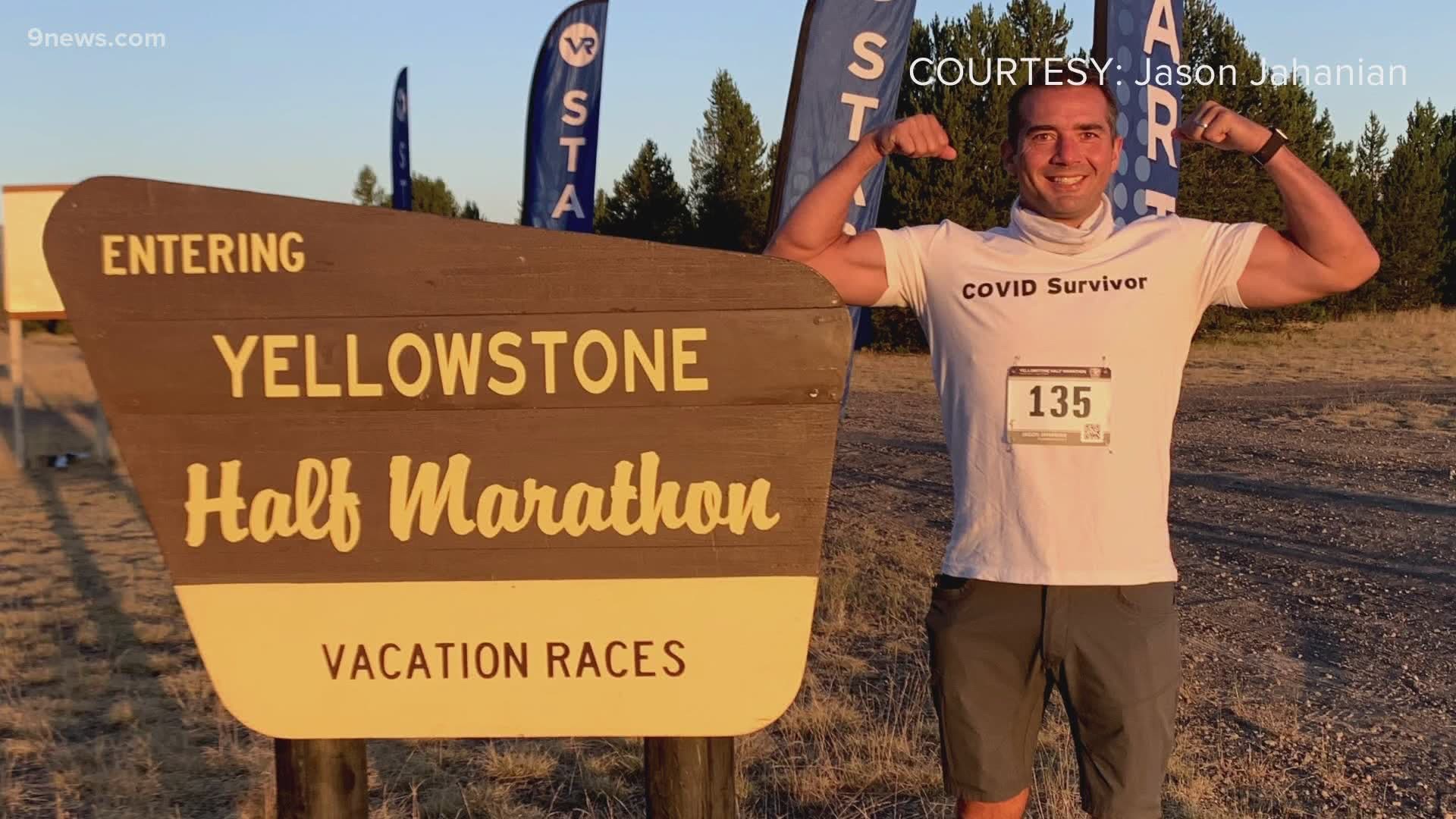COLORADO, USA — He ran 40 miles for his 40th birthday. He counts marathons and obstacle courses among his many outdoor hobbies.
But despite an extraordinary active lifestyle and no pre-existing conditions, Jason Jahanian ended up in the hospital battling COVID-19 earlier this year.
“Early on, when I first started feeling symptoms, I was in a bit of disbelief,” Jahanian remembered. “I didn’t think it would impact me the way it did.”
The symptoms first hit in late March. By early April, he went to his local emergency room and was later transferred to the Medical Center of Aurora.
“I was at the hospital for a total of 19 days, 14 of those days I was ‘asleep,’ as I call it,” he said.
Jahanian was on a ventilator for those 14 days, and on an ECMO machine for nine days.
“Which removes your blood, oxygenates it, and puts it back in you,” he said.
Yet, he was still getting sicker and sicker. Doctors tried another approach: convalescent plasma.
“And then it was a rapid recovery,” Jahanian said. “And I finally woke up at that point – a day before my wife’s birthday. On April 17.”
“We gave him the plasma and you could literally see him wake up,” explained Dr. Phil Stahel, the Chief Medical Officer at the Medical Center of Aurora.
“His systems normalized, the inflammation went away, and actually, just about a day or two later, he was able to call his wife Michelle and say happy birthday.”
“Convalescent plasma is such an intriguing concept,” Dr. Stahel explained. “It goes back about 150 years, to the late 19th century, long before antibiotics were invented, before anti-bacterial, anti-viral treatments were available. We took people who were infected before, and a month later took their blood, because that blood would mount an immune response and build antibodies to that pathogen. So that’s called passive immunization.”
Dr. Stahel said antibodies in convalescent plasma can do three things for a sick COVID19 patient:
- Find, attack, and neutralize the virus
- Mitigate inflammatory response
- Help prevent blood clots
“For that reason, I personally feel that convalescent plasma is the single silver bullet we currently have available, in light of uncertainty and lack of availability for certain treatments for COVID,” he said.
“At the Medical Center of Aurora, we’ve treated more than 100 patients up to date with convalescent plasma. And almost, without exception, every patient did extremely well within just 24 hours of just receiving the plasma.”
During this pandemic, many doctors have tried convalescent plasma as a treatment for COVID-19 patients. 9Health Expert Dr. Payal Kohli said scientists are still studying how effective it really is.
"Because it's worked like this in the past, and the coronavirus is a 'novel' coronavirus for which we don't have many effective treatments, this was tried as an experiment," she explained, saying research about plasma's effectiveness for COVID patients started back in March.
"Since then we've had some subsequent studies that have shown potential for promise, but the totality of the data yet is not convincing enough that scientists feel it warrants emergency use authorization."
The FDA was reviewing an Emergency Use Authorization for convalescent plasma. The New York Times reported this week that's been put on hold after Dr. Anthony Fauci and other health experts intervened, saying the current data wasn't strong enough yet.
"Dr. [Anthony] Fauci and other health experts advised caution in approving that EUA for convalescent plasma for a few reasons," Dr. Kohli said. "The first is because... the clinical trials had suggested some benefit, but it hasn’t been statistically significant. So the question remains whether we just need more patients to figure out if there's a clinical benefit or whether there just isn’t a clinical benefit that’s mathematically significant."
She continued, "The second reason the EUA was put on hold was because in order to answer that first question, we need to have ongoing, randomized control trials. We need to get people enrolled in trials."
Jahanian and his doctors said they believe plasma helped with his recovery.
He went home from the hospital on April 21, and spent the following weeks working to not just recovery – but to resume his active lifestyle. His wife and two children cheered him along during his recovery.


“Having woken up and being 30 pounds lighter, and having no muscle be able to sit up on my own, let alone walk -- I had to walk with a walker for about a week after waking up,” he said.
He kept pushing himself, physically and mentally.
“At that point, I had it in my mind that I’m going to beat this thing. I’m going to do whatever I can to power through it.”
One month after he left the hospital, Jahanian walked a 14K for the 14 days he was in the hospital. Soon he started hiking again. He pushed himself to the top of a 14er climb this summer. He also started running again and recently finished a half marathon at Yellowstone National Park.
“Every time I’m on a hike and I get to the top of the mountain, that viewpoint from the top of that mountain means a lot more,” he said. “Before I was battling for time, now I’m on there, on the top of that mountain, and I’m happy to be on the top of that mountain.”
Jahanian also developed a friendship with Dr. Stahel. They’ve bonded over backgammon games and running, and even ran a 10K together recently.


“A week prior he had a lung function test which was completely normal,” Dr. Stahel said. “That’s astonishing in itself, because a lot of patients develop post-COVID scarring of the lungs and do worse. His heart function is normal, his lung function is normal and he was back in such good shape. I had to fake it and attempt to run a fast pace just to impress him!”
The two have more races planned, soon. Jahanian hopes to complete a full marathon later this year.
He said he is grateful for his plasma donor, although he doesn’t know who it is.
“Whoever that is out there, thank you!”
He said his wife tested positive for antibodies and plans to donate her own plasma. He said hopes he can do the same for someone else someday, too.
“Let’s beat this thing together,” he said.
SUGGESTED VIDEOS: COVID-19 Coronavirus


